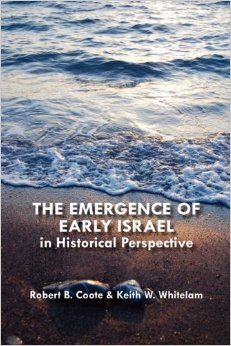 Biblical history and biblical archaeology have fought back to a new ascendancy after surviving the double-edged scrutiny of opponents they disparaged as “minimalists”.
Biblical history and biblical archaeology have fought back to a new ascendancy after surviving the double-edged scrutiny of opponents they disparaged as “minimalists”.
For a moment it looked like genuine historical inquiry into ancient Palestine had the potential to displace the paraphrasing the Bible and the tendency to interpret nearly every archaeological artefact through the Bible. “Biblical History” and “Biblical Archaeology” blanket the archaeological remains of Palestine with the tapestry of the Bible’s story of Israel. Naturally this means that the tapestry’s tale appears distorted in places but the primary structure remains clear:
- Israel emerged in Canaan as a distinctly religious and ethnic identity in the early part of the first millennium
- After a period of some kind of unity culminating in David’s rule, Israel split into two political entities, Israel in the north and Judah in the south, and continued to dominate the region up until the Assyrian and Babylonian captivities
- The Jews returned after the Persians “liberated” them from their Babylonian exile and continued as a distinctly “Jewish” civilization up until the time the Romans dispersed them; the religions of Judaism and Christianity emerged from the religious thought and writings of this Second Temple era.
Other groups who make an appearance in this biblical history for most part do so as external conquerors to be overcome or as indigenous corrupters to be left behind.
This kind of history begins with the Bible and archaeological discoveries are significant insofar as they can add some colour or modification to that biblical narrative.
Is this comparable to beginning with the tales of King Arthur’s Camelot and using those to recreate the history of early Britain?
Doubling the excitement
Valid historical investigation should always ensure the horse is positioned in front of the cart.
Start with the “hard” evidence like the carved stones, baked clay and forged metal found in the ground. What can be reconstructed from these? After having done that we can compare the results with literature that first appeared in considerably later strata.
If we find that the literature describes just what we have found and calls it Camelot then that’s exciting. On the other hand, if the literature’s narrative of Camelot is significantly at odds with what we have found then we have double excitement: before us lie two quests — the quest to learn more about the real world history found through the hard evidence in the ground; another quest to understand the origin of the Camelot narrative.
A Fight for history
Twenty to thirty years ago a few scholars opened up the first challenges to the dominance of “Biblical history” in Biblical studies. Here is how one of those scholars, Keith Whitelam, looking back described what happened in the wake of the publication in 1987 of The Emergence of Early Israel in Historical Perspective by Robert Coote and himself: Continue reading “The Dark Resurgence of Biblical History”
